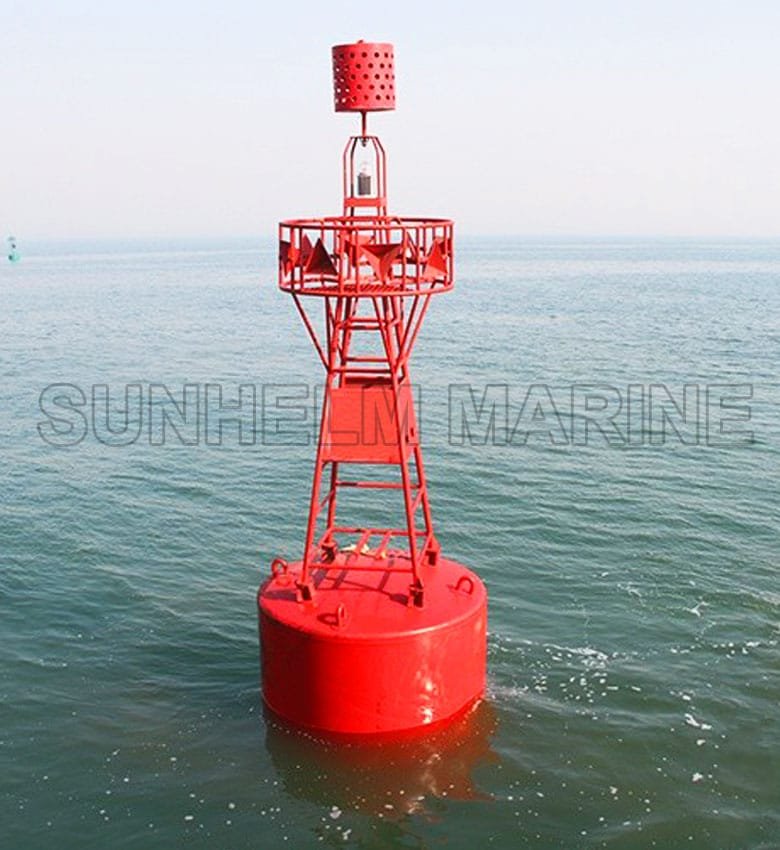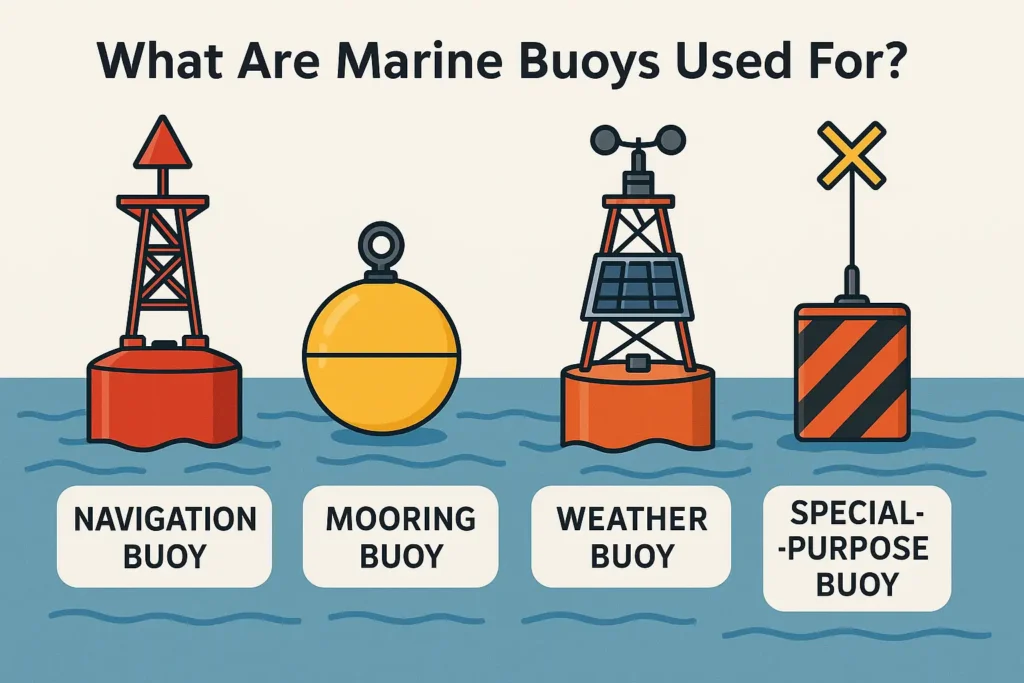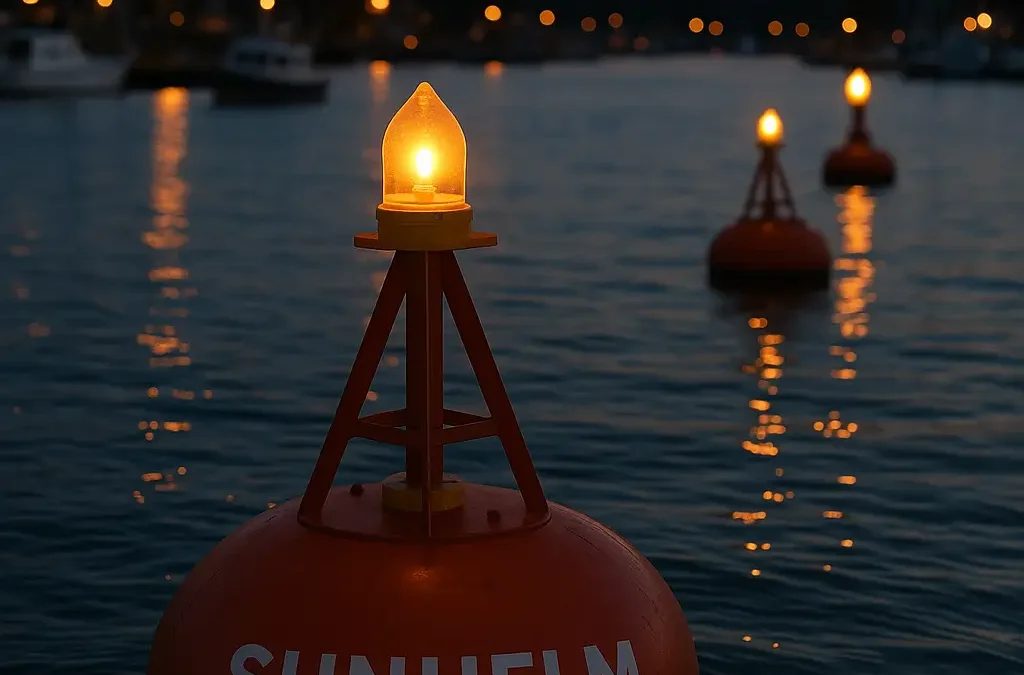Sailing Across Wide Waters: Understanding Navigation Buoys
Whether you are an experienced sailor or a casual boat owner, one essential tool you can’t do without on the water is navigation buoys. These floating “traffic signs” guide vessels, mark dangers, and ensure safe passage. Every crew member needs to know how to recognize and follow these buoys correctly. In this article, we’ll explore the role of navigation buoys, their types, and how to navigate safely using internationally accepted rules.
What Are Navigation Buoys? The Silent Guides on Water
Navigation buoys, also called markers, lighthouses, or beacons, sit in the water to show channels, obstacles, danger zones, or special spots. They use colors, shapes, top marks, light patterns, and sometimes sound signals to send important messages. This helps boats avoid running aground, collisions, or other risks.
The IALA System: The Global Standard for Navigation Buoys
To keep navigation safe and consistent worldwide, the International Association of Marine Aids to Navigation and Lighthouse Authorities (IALA) created two main buoy systems: IALA Region A and IALA Region B. They differ mainly in the color rules for lateral marks:
- IALA Region A (used in Europe, Africa, most of Asia, and Australia): When a boat moves from sea toward a port or upstream, keep red buoys on the right (starboard) side and green buoys on the left (port) side.
- IALA Region B (used in North and South America, Japan, Korea, the Philippines, and China): When a boat moves from sea toward a port or upstream, keep red buoys on the left (port) side and green buoys on the right (starboard) side.
This article focuses on the IALA Region B system, which applies to many key shipping areas including China.
Know Your Navigation Buoys: IALA Region B System Explained
In IALA Region B, navigation buoys fall into two main categories: lateral marks and non-lateral marks.


Lateral Marks
These buoys show the sides of a channel:
- Red Buoys (Port Side):
- Color: Red
- Shape: Usually cylindrical (can-shaped)
- Top Mark: If any, a single red cylinder
- Light: Red flashing light if lit
- How to Pass: When returning to port (from sea to upstream), keep red buoys on your left side. This is the well-known rule: “Red, Left, Returning.” When leaving port (going downstream), keep red buoys on your right side.
- Green Buoys (Starboard Side):
- Color: Green
- Shape: Usually conical (nun-shaped)
- Top Mark: If any, a single green cone pointing upward
- Light: Green flashing light if lit
- How to Pass: When returning to port, keep green buoys on your right side. When leaving port, keep green buoys on your left side.
Non-Lateral Marks
These marks provide other important information beyond channel sides:
- Safe Water Buoys:
- Purpose: Mark safe water all around, often found in the middle of channels or harbor entrances
- Color: Red and white vertical stripes
- Shape: Spherical or pillar-shaped
- Top Mark: Usually a single red sphere
- Light: White light, flashing or long flashes
- How to Pass: Safe to pass on any side.
- Isolated Danger Buoys:
- Purpose: Mark isolated dangers like wrecks or rocks nearby
- Color: Black and red horizontal bands
- Shape: Usually pillar or spherical
- Top Mark: Two black spheres stacked vertically
- Light: White light flashing in groups of two
- How to Pass: Keep a safe distance around these buoys.
- Special Marks:
- Purpose: Indicate special areas such as pipelines, cables, military zones, or survey markers
- Color: Yellow
- Shape: Any shape, usually pillar or cone
- Top Mark: A single yellow “X” shape
- Light: Yellow flashing light
- How to Pass: Follow specific instructions on nautical charts.
- Cardinal Marks:
- Purpose: Show where the safest water lies in relation to the buoy (North, South, East, West)
- Color: Yellow and black combinations
- Shape: Pillar or spar
- Top Mark: Two black cones arranged in different ways
- Light: White light with specific flash patterns
- How to Pass: Use the top mark’s direction and light pattern to find the safe side.

Beyond Colors and Shapes: Lights, Shapes, and Sounds
Navigation buoys also use other features to guide sailors:
- Lights:
They are vital for night navigation. Each buoy’s light flashes in a unique pattern and color, matching its type. - Shapes:
- Can (cylindrical) shapes usually mark red lateral buoys.
- Nun (conical) shapes usually mark green lateral buoys.
- Spar and spherical shapes can mark other types.
- Sound Signals:
In low visibility, such as fog, some buoys emit sounds like bells, gongs, or horns to help boats locate them.
Practical Tips for Using Navigation Buoys
Knowing buoy types isn’t enough; here are some tips for safe navigation:
- Always Check Nautical Charts: Buoys complement charts. Before sailing, study updated charts for channels, depths, dangers, and buoy locations.
- Don’t Rely Only on Buoys: Storms or collisions may move or damage buoys, or their lights may fail. Use electronic navigation and keep visual watch.
- Keep a Safe Distance: Especially near strong currents or large vessels, avoid getting too close to buoys.
- Know Local Rules: Some waters have special marks or unique regulations—learn these in advance.
- Stay Aware: Always know your position and your distance to buoys and hazards.
Conclusion
Learning about navigation buoys is the key to safe sailing. These silent guides help us find our way through waters and avoid hidden dangers. Spending time to understand and use them well will improve your navigation skills and keep everyone on board safe.
Do you have any questions about IALA Region A and B rules? Or would you like to learn more about specific types of navigation buoys?


